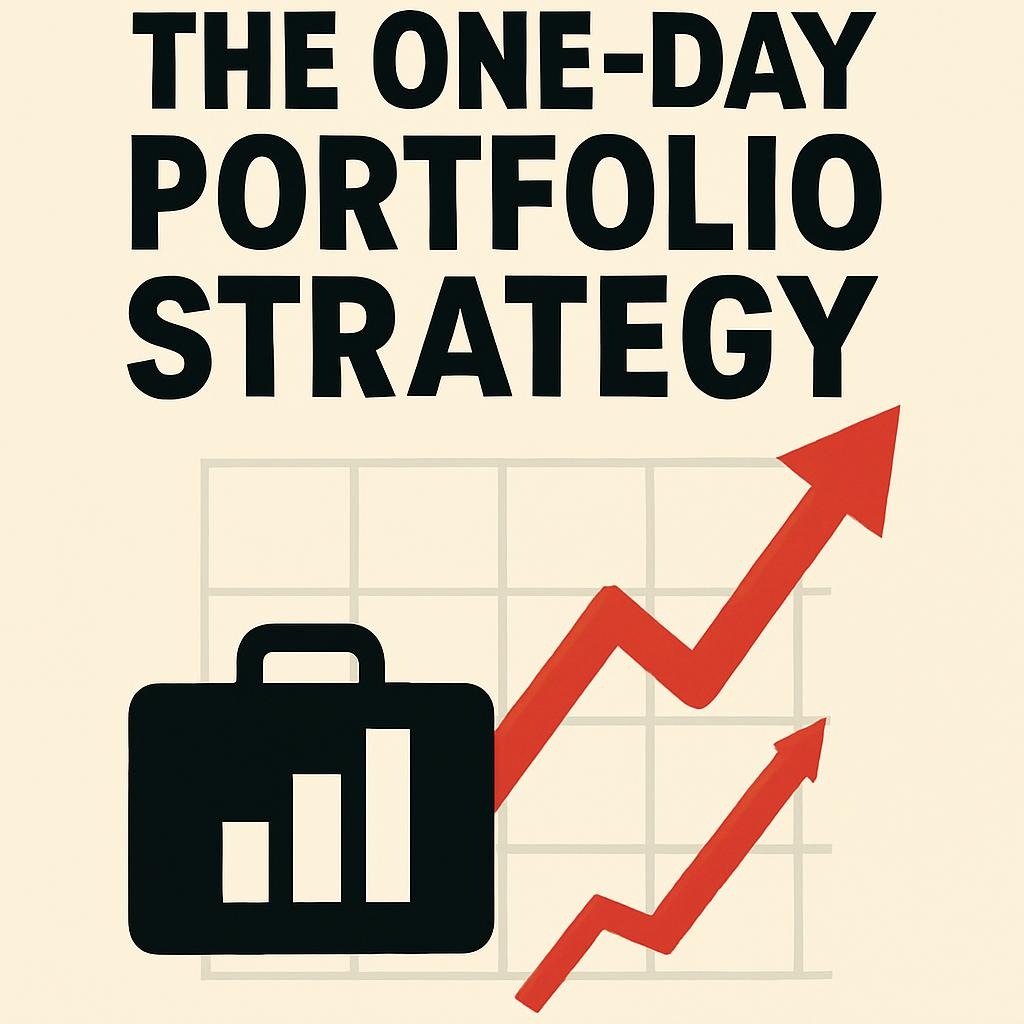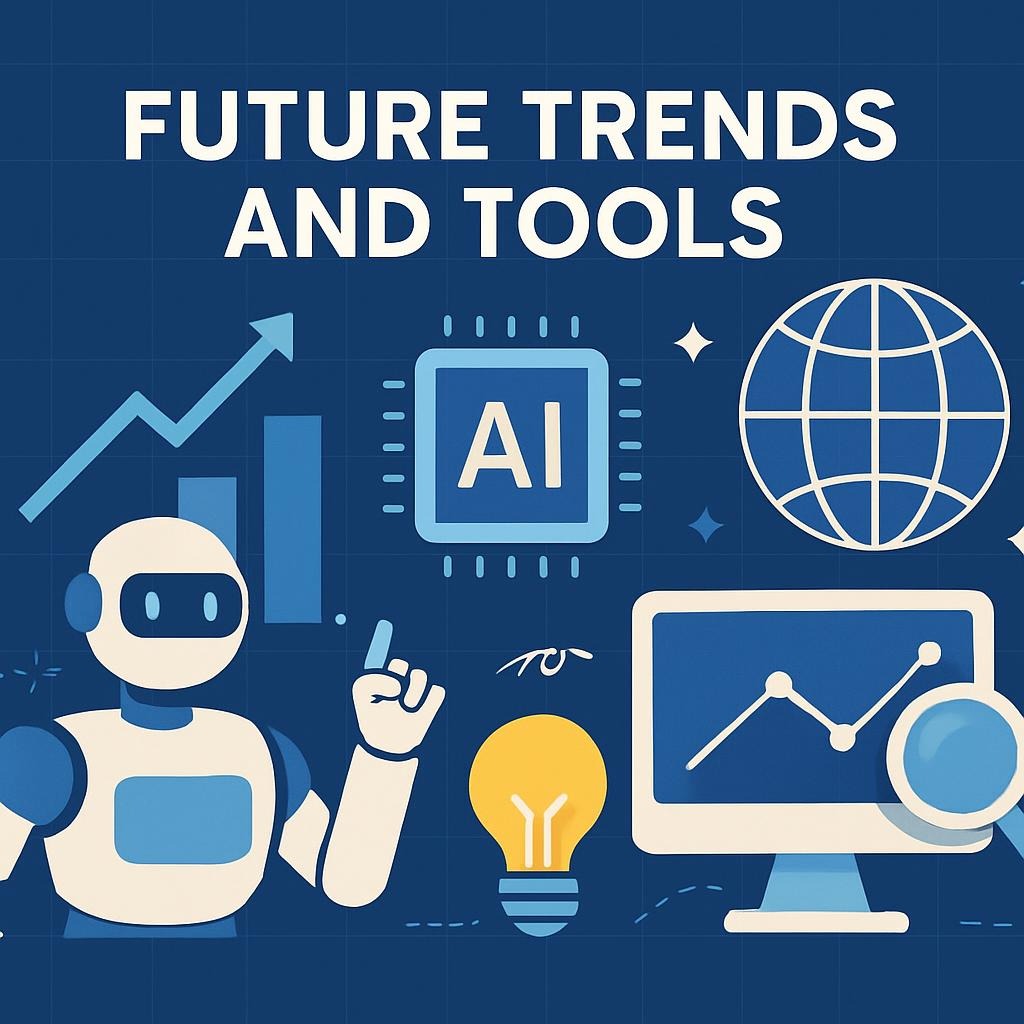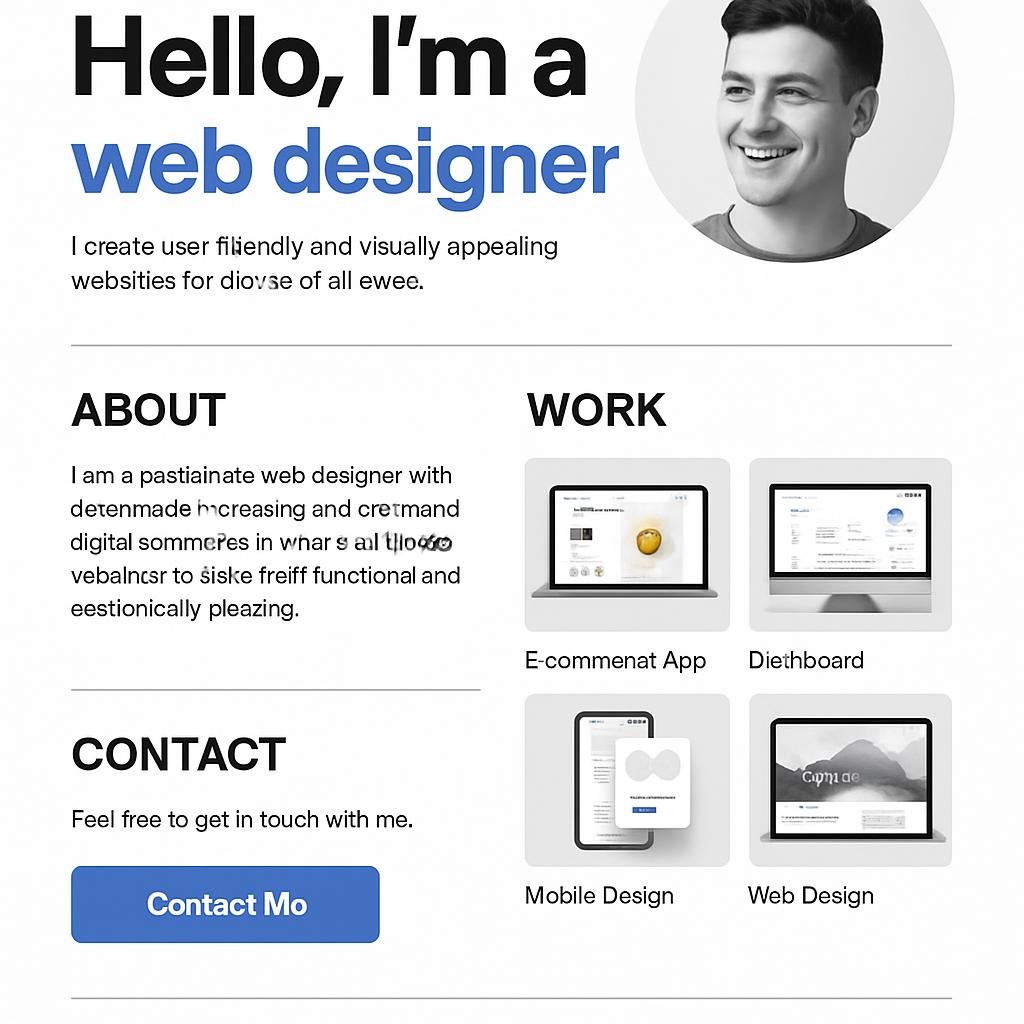How I Created a Portfolio Website
The landscape of portfolio website creation has undergone a dramatic transformation since 2020. What once required weeks of coding, design iterations, and technical troubleshooting can now be accomplished in a single focused day—or even a few hours for the well-prepared.
The acceleration began with the rise of no-code platforms like Webflow and Framer, gained momentum through AI-powered design tools, and reached new heights in 2025 with integrated AI assistants that can generate code, copy, and even optimize for SEO in real-time. Today’s creators have access to sophisticated drag-and-drop builders, automated deployment systems, and AI-generated content that would have seemed like science fiction just five years ago.
This shift represents more than technological convenience—it’s democratizing professional web presence. Freelancers, job seekers, and creative professionals no longer need extensive technical knowledge or significant budgets to establish credible online portfolios that rival those built by professional agencies.
TL;DR – Key Takeaways:
- Modern tools enable complete portfolio creation in 4-8 hours
- AI assistants can generate 70-80% of your content and code
- No-code platforms offer professional results without programming
- Template customization beats building from scratch for speed
- Mobile-first design is non-negotiable in 2025
- SEO optimization can be automated during the build process
- Version control and iterative improvement ensure long-term success
Definition: The One-Day Portfolio Strategy

A one-day portfolio website is a fully functional, professionally designed digital showcase that can be conceived, built, launched, and optimized within a single 8-12-hour work period. This approach prioritizes strategic planning, efficient tool selection, and systematic execution over perfectionism.
Unlike traditional web development cycles that span weeks or months, the one-day methodology focuses on:
- Rapid prototyping using pre-built templates and components
- Content preparation before any design work begins
- Tool mastery of 2-3 platforms rather than learning multiple technologies
- Iterative refinement post-launch rather than endless pre-launch tweaking
Comparison: One-Day vs. Traditional Approaches
| Approach | Timeline | Cost | Customization | Technical Skill | Best For |
|---|
| One-Day Portfolio | 4–12 hours | $0–$50 | Moderate–High | Beginner–Intermediate | Job seekers, freelancers, quick launches |
| Traditional Custom | 2–8 weeks | $500–$5,000 | Complete | Advanced | Established businesses, unique requirements |
| Agency-Built | 4–12 weeks | $2,000–$15,000 | High | N/A (outsourced) | Large budgets, complex functionality |
| Template Modification | 1–3 days | $20–$200 | Moderate | Beginner | Budget-conscious users, standard website needs |
Why the One-Day Portfolio Matters in 2025
Business Impact
The modern hiring landscape moves at unprecedented speed. According to recent studies, 73% of recruiters spend less than 30 seconds on initial candidate evaluations, with portfolio websites serving as the primary differentiator for creative and technical roles. A delayed portfolio launch often means missed opportunities, as project-based hiring cycles in the gig economy rarely wait for perfect presentations.
Efficiency Gains
Time Compression: Modern tools have reduced portfolio creation time by an average of 85% compared to 2020 methods. What required 40-60 hours of work can now be accomplished in 6-8 hours with proper preparation.
Cost Effectiveness: The total cost of launching a professional portfolio has dropped from an average of $1,200 (including design, development, and hosting) to under $100 for comparable quality results.
Market Responsiveness: One-day portfolios enable rapid iteration based on feedback, allowing creators to test multiple approaches or pivot quickly based on job market demands.
Safety and Ethical Implications
Speed doesn’t compromise security when proper practices are followed. Modern platforms include built-in security features, SSL certificates, and GDPR compliance tools. However, the rush to launch can lead to oversight of privacy settings, analytics compliance, and accessibility standards if not properly planned.
Types of One-Day Portfolio Approaches
| Approach | Description | Best Example | Key Insights | Potential Pitfalls | Tools / Platforms |
|---|---|---|---|---|---|
| No-Code Builder | Visual drag-and-drop construction | Webflow showcase sites | Fastest learning curve, professional results | Limited customization, monthly costs | Webflow, Framer, Squarespace |
| Template Customization | Modify existing premium templates | GitHub portfolio templates | Balance of speed and uniqueness | Risk of looking generic | GitHub Pages, Netlify, Vercel |
| AI-Assisted Development | AI generates code and content | GPT-4 built portfolios | Highly personalized, cutting-edge approach | Requires prompt engineering skills | Claude, GPT-4, GitHub Copilot |
| Hybrid Approach | Combine multiple methods strategically | Template base + AI + no-code refinement | Maximum flexibility and quality | Complexity management required | Multiple platforms |
| Static Site Generators | Code-based but template-driven | Gatsby/Next.js portfolios | Developer-friendly, highly optimized | Steeper learning curve | Gatsby, Next.js, Hugo |
Components: Essential Building Blocks
1. Strategic Foundation (Hour 1)
Goal Definition: Clearly articulate your portfolio’s primary purpose—job seeking, client acquisition, or personal branding. This decision influences every subsequent choice.
Content Audit: Gather and organize all materials before touching any design tools:
- 15-20 work samples (choose 5-8 for display)
- Professional headshot and casual photo options
- Biography (150 and 500-word versions)
- Contact information and social media links
- Skills list with proficiency levels
- Testimonials or recommendations
💡 Pro Tip: Create a shared folder with all assets properly named (project1_thumbnail.jpg, bio_short.txt) to eliminate search time during building.
2. Technical Architecture (Hour 2)
Platform Selection: Choose your primary building tool based on:
- Technical comfort level
- Budget constraints
- Customization requirements
- Long-term maintenance preferences
Domain and Hosting Setup: Secure your domain (ideally firstname-lastname.com) and configure hosting. Many modern platforms handle this automatically, but custom domains add professionalism.
Performance Optimization Framework: Establish image compression workflows, CDN setup (if needed), and mobile testing protocols before content creation begins.
3. Design System Creation (Hour 3)
Color Palette: Limit yourself to 3-4 colors maximum. Use tools like Coolors.co or Adobe Color for scientifically pleasing combinations.
Typography Hierarchy: Select 2 fonts maximum—one for headings, one for body text. Google Fonts offers excellent free options with web optimization built in.
Grid System: Establish consistent spacing and layout rules that will guide all page creation. Most modern templates include these, but understanding the system enables better customization.
4. Content Development with AI Integration
Modern AI tools can accelerate content creation significantly when properly prompted:
Biography Generation: Use structured prompts to create multiple bio variants:
"Create three biography versions (50, 150, and 300 words) for a [YOUR PROFESSION] with these key achievements: [LIST]. Tone should be professional but approachable, highlighting [SPECIFIC SKILLS/VALUES]."Project Descriptions: Standardize project presentations with AI assistance:
"Transform these project notes into a compelling portfolio description: [RAW NOTES]. Include challenge, approach, results, and technologies used. Target audience: [POTENTIAL CLIENTS/EMPLOYERS]."5. Advanced Interactive Elements
Micro-Animations: Subtle animations improve engagement without overwhelming visitors. Focus on:
- Hover effects on project thumbnails
- Smooth scrolling between sections
- Loading animations for large images
- Form submission feedback
Progressive Enhancement: Build core functionality first, then layer on advanced features like:
- Dark/light mode toggles
- Advanced filtering for project galleries
- Contact form integration
- Analytics tracking
Advanced Techniques and Strategies

Meta-Prompting for AI-Assisted Development
When working with AI coding assistants, structure your requests for maximum efficiency:
Systematic Prompting Approach:
- Context Setting: “I’m building a portfolio website for a UX designer targeting tech startups.”
- Specific Requirements: “Create a project grid component with hover effects, filtering by category, and responsive design.”
- Technical Constraints: “Use vanilla HTML/CSS/JS, no frameworks, optimized for mobile-first.”
- Success Criteria: “Should load in under 2 seconds, work on IE11+, and include accessibility features.”
Agentic Workflow Integration
Create AI agents for different aspects of your build:
- Content Agent: Generates and refines copy across all pages
- SEO Agent: Optimizes meta tags, alt text, and site structure
- Performance Agent: Reviews code for optimization opportunities
- Accessibility Agent: Ensures WCAG compliance throughout
Code Snippet Library for Common Functions
Smooth Scrolling Navigation:
javascript
document.querySelectorAll('a[href^="#"]').forEach(anchor => {
anchor.addEventListener('click', function (e) {
e.preventDefault();
document.querySelector(this.getAttribute('href')).scrollIntoView({
behavior: 'smooth',
block: 'start'
});
});
});Lazy Loading Images:
javascript
if ('IntersectionObserver' in window) {
const imageObserver = new IntersectionObserver((entries, observer) => {
entries.forEach(entry => {
if (entry.isIntersecting) {
const img = entry.target;
img.src = img.dataset.src;
img.classList.remove('lazy');
imageObserver.unobserve(img);
}
});
});
document.querySelectorAll('img[data-src]').forEach(img => imageObserver.observe(img));
}Integration Automation Hacks
Zapier Workflows: Automate contact form submissions to create leads in your CRM, send thank-you emails, and update your project tracking spreadsheet.
GitHub Actions: Set up automated deployment pipelines that update your live site whenever you push changes to your repository.
Analytics Integration: Implement Google Analytics 4 with custom events for project views, contact form submissions, and document downloads to understand visitor behavior.
Real-World Applications: 2025 Success Stories

Case Study 1: The Remote UX Designer
Background: Sarah, a mid-level UX designer, needed to transition from in-house to remote freelancing during the 2024-2025 remote work expansion.
Challenge: Competing against established freelancers with extensive online presences while maintaining her full-time job.
One-Day Solution: Using Webflow and AI-generated content, Sarah created a portfolio featuring:
- Interactive prototype embeddings from Figma
- Client testimonial videos (recorded via Loom)
- A blog section with UX insights (AI-assisted writing)
- Automated contact forms with project brief templates
Results: Within three weeks, Sarah secured two consulting contracts worth $15,000 total. Her portfolio’s professional appearance and efficient contact process impressed potential clients who compared her favorably to more expensive agencies.
Case Study 2: The Career-Pivot Developer
Background: Marcus, a mechanical engineer, completed a coding bootcamp and needed to demonstrate his new skills to potential employers.
Challenge: Limited professional development experience, but strong foundational projects from bootcamp.
One-Day Solution: Built on GitHub Pages using a customized template:
- Interactive code samples with live demos
- Problem-solving blog posts explaining complex algorithms
- Contribution history visualization from GitHub
- Skills progression timeline showing learning velocity
Results: Received interview requests from 40% of applications (compared to 8% industry average for bootcamp graduates). Landed a junior developer role at a fintech startup within six weeks.
Case Study 3: The Creative Agency Founder
Background: Lisa launched a boutique creative agency in late 2024, needing to establish credibility quickly.
Challenge: No existing client work to showcase, competing against established agencies.
One-Day Solution: Framer-based site with sophisticated animations:
- Conceptual projects demonstrating range and creativity
- Process documentation showing professional methodology
- Team member spotlights building personal connection
- Interactive service pricing calculator
Results: The portfolio generated $45,000 in new business within the first quarter, with clients specifically mentioning the website’s professionalism as a decision factor.
Case Study 4: The Academic Researcher
Background: Dr. Chen, a postdoctoral researcher, needed to showcase interdisciplinary work spanning computer science and biology.
Challenge: Complex research topics that needed translation for broader audiences, including potential collaborators and funding bodies.
One-Day Solution: Hugo static site generator with academic template:
- Interactive data visualizations of research findings
- Plain-language summaries of technical papers
- Collaboration timeline showing interdisciplinary partnerships
- Open-source contribution gallery
Results: Received three collaboration invitations from international research teams and two speaking opportunities at major conferences.
Case Study 5: The E-commerce Entrepreneur
Background: Alex needed to establish personal authority in the dropshipping education space while scaling his existing business.
Challenge: Differentiating from thousands of similar entrepreneurs, proving genuine expertise beyond social media presence.
One-Day Solution: Squarespace-based authority site:
- Detailed case studies with profit/loss transparency
- Educational content library with actionable insights
- Podcast embedding with episode highlights
- Email capture system with valuable lead magnets
Results: Built an email list of 2,000+ subscribers in three months, launched a successful course generating $50,000 in first-quarter revenue.
Challenges and Security Considerations

Common Security Pitfalls
Form Vulnerabilities: Contact forms represent the primary attack vector for portfolio sites. Implement:
- CAPTCHA protection (reCAPTCHA v3 for better UX)
- Rate limiting to prevent spam submission
- Input sanitization for all fields
- Secure transmission via HTTPS only
Data Privacy Compliance: Even simple portfolios collect visitor data through analytics. Ensure:
- Clear privacy policy explaining data collection
- Cookie consent mechanisms were required
- GDPR compliance for European visitors
- Data retention policies and deletion procedures
Content Security: Protect your intellectual property:
- Watermark high-resolution images
- Disable right-click saving (though not foolproof)
- Use low-resolution preview images with full versions behind contact gates
- Consider legal notices for work usage
Performance and Accessibility Risks
Speed Optimization Oversights:
- Uncompressed images are causing slow load times
- Excessive animation in JavaScript is affecting mobile performance
- Third-party script bloat from analytics and social media integrations
- Unoptimized fonts are loading incorrectly on slower connections
Accessibility Compliance: One-day builds are often neglected:
- Alt text for images and graphics
- Keyboard navigation for interactive elements
- Sufficient color contrast ratios
- Screen reader compatibility for complex layouts
💡 Pro Tip: Use automated testing tools like WAVE or axe-core to catch accessibility issues before launch.
Best Practice Defense Strategies
Security Hardening:
- Choose platforms with built-in security features
- Enable two-factor authentication on all accounts
- Use strong, unique passwords for each service
- Regularly update all plugins and themes
- Implement SSL certificates (often automatic with modern hosts)
Performance Monitoring:
- Set up Google PageSpeed Insights monitoring
- Use GTmetrix for detailed performance analysis
- Test on actual mobile devices, not just browser tools
- Monitor Core Web Vitals for SEO impact
- Implement image lazy loading for faster initial loads
Backup and Recovery:
- Version control all custom code in Git repositories
- Export content and settings from platform dashboards
- Document all third-party integrations and API keys
- Create staging environments for testing changes
- Schedule regular automated backups where possible
Future Trends and Tools (2025-2026)

Emerging Technologies Reshaping Portfolio Creation
AI-Powered Design Assistance: The next generation of design AI will move beyond content generation to complete visual design. Tools like Midjourney for web layouts and GPT-4 Vision for design critique will enable non-designers to create sophisticated visual experiences. Expect integration with major website builders by mid-2025.
Voice Interface Integration: As smart speakers become ubiquitous, portfolios will need voice-accessible content. Early adopters are experimenting with voice-activated project presentations and audio descriptions of visual work. This trend will accelerate as accessibility regulations expand to include voice navigation.
Augmented Reality Showcases: WebAR technology is making 3D portfolio elements accessible through mobile browsers without app downloads. Architects, product designers, and artists are already experimenting with AR portfolio pieces that visitors can view in their own space.
Blockchain Verification: Creative professionals are beginning to use blockchain technology to verify the authenticity and ownership of their work. NFT integration for portfolio pieces provides proof of creation and can create additional revenue streams.
Tools Worth Watching
Development Platforms:
- Framer (2025 updates): Advanced component system with AI-generated interactions
- Webflow (Code Export feature): Bridging no-code and custom development
- Notion Sites: Document-to-website conversion with database integration
- Gamma: AI-first design tool focusing on content-to-design automation
AI Assistant Integration:
- GitHub Copilot X: Advanced code generation with natural language prompts
- Figma AI: Automated design system creation and component generation
- Jasper for Websites: SEO-optimized content generation specifically for web copy
- Runway ML: Video and interactive element creation for portfolios
Performance and Analytics:
- Vercel Analytics: Real-time performance monitoring with optimization suggestions
- Hotjar 2.0: Enhanced user behavior analytics with AI-powered insights
- Cloudflare Workers: Edge computing for ultra-fast portfolio performance
- Core Web Vitals Tools: Automated optimization based on Google’s ranking factors
Predicted Industry Shifts
Template Marketplace Evolution: Expect hyper-specialized templates for specific industries and roles. The one-size-fits-all approach will give way to templates optimized for specific outcomes (job seeking vs. client acquisition vs. thought leadership).
Integration Ecosystem Maturity: The fragmented landscape of tools will consolidate into comprehensive suites. Adobe’s web suite, Google’s workspace integration, and Microsoft’s low-code platform will offer end-to-end portfolio creation and management.
Performance Standards Elevation: As Internet speeds increase globally, expectations for portfolio sophistication will rise. Basic static sites will seem outdated compared to interactive, animated experiences that load instantly.
Personalization at Scale: AI will enable mass personalization, where portfolios automatically adapt their content and presentation based on the visitor’s background, industry, or referral source.
People Also Ask (PAA) Section
Q: How much does it cost to build a portfolio website in one day? A: Costs range from $0-$200 depending on your approach. Free options include GitHub Pages, Netlify, or basic Wix/Squarespace plans. Premium approaches with custom domains, advanced features, and professional templates typically cost $50-$200 for the first year, including hosting and domain registration.
Q: Can I really build a professional portfolio in just one day without coding skills? A: Absolutely. Modern no-code platforms like Webflow, Framer, and Squarespace enable professional results without programming knowledge. The key is preparation—having your content, images, and goals defined before you start building. Most users complete functional portfolios in 6-8 hours using these tools.
Q: What’s the difference between a portfolio website and a personal website? A: Portfolio websites focus specifically on showcasing work samples, skills, and professional achievements to attract employers or clients. Personal websites are broader, including personal interests, blog content, and lifestyle elements. Portfolio sites are more targeted and conversion-focused, while personal sites emphasize authentic self-expression.
Q: How do I make my one-day portfolio stand out from others using the same template? A: Customization is key: use your own color scheme, replace placeholder images with original photography, write unique copy that reflects your voice, add personal touches like custom icons or illustrations, and ensure your content tells a cohesive story about your professional journey and values.
Q: Should I include pricing on my portfolio website? A: For service providers and freelancers, including pricing (even ranges) can qualify leads and save time on unsuitable inquiries. However, for job seekers or those pursuing unique project work, pricing can be limiting. Consider your primary goal: if it’s client acquisition, pricing helps; if it’s employment or partnerships, focus on value demonstration instead.
Q: How often should I update my portfolio after the initial one-day build? A: Plan for quarterly content updates (new projects, testimonials, skills) and annual design refreshes to stay current. However, monitor analytics monthly to identify high-performing content and optimization opportunities. The one-day approach enables quick iterations rather than major overhauls.
Frequently Asked Questions

Q: What if I don’t have enough work samples for a full portfolio? A: Quality trumps quantity. Present 3-5 excellent pieces rather than padding with mediocre work. For new professionals, include conceptual projects, volunteer work, coursework, or personal experiments that demonstrate your skills and thinking process. Consider creating case studies that show a problem-solving approach even for simple projects.
Q: How do I handle client confidentiality when showcasing work? A: Always obtain written permission before featuring client work. For confidential projects, create anonymized case studies focusing on your process and results without revealing sensitive details. You can also develop conceptual projects that demonstrate similar skills without using actual client work.
Q: Should my portfolio website include a blog section? A: Only if you plan to maintain it consistently. An outdated blog with posts from six months ago suggests neglect. If you’re committed to regular content creation (monthly minimum), a blog can boost SEO and demonstrate expertise. Otherwise, focus on static pages that showcase your work effectively.
Q: How important is mobile optimization for portfolio sites? A: Critical. Over 60% of portfolio traffic comes from mobile devices, and Google prioritizes mobile-friendly sites in search rankings. Test your site on actual devices, not just browser tools, and ensure all interactive elements work smoothly on touchscreens.
Q: Can I use the same portfolio for different types of job applications? A: While one portfolio can serve multiple purposes, consider creating targeted landing pages for different opportunities. Use your main portfolio as a comprehensive showcase, then create specific entry points that highlight relevant work for particular roles or industries.
Q: What analytics should I track on my portfolio website? A: Focus on visitor behavior metrics: page views, time on site, bounce rate, and conversion actions (contact form submissions, document downloads, project clicks). Use Google Analytics 4 to track these metrics and identify which projects or pages resonate most with visitors.
Conclusion
The one-day portfolio methodology represents more than a time-saving technique—it’s a fundamental shift toward agile professional presentation. By embracing rapid iteration over perfectionism, modern tools over traditional methods, and strategic focus over comprehensive coverage, creators can establish compelling online presences that evolve with their careers rather than constraining them.
The key insights from this comprehensive exploration reveal that success depends less on technical mastery and more on strategic preparation, tool selection, and systematic execution. The democratization of professional web design through AI assistance and no-code platforms has created unprecedented opportunities for individuals to compete with established agencies and experienced developers.
As we move deeper into 2025, the professionals who thrive will be those who embrace this accelerated approach to digital presence creation. They’ll iterate quickly, test frequently, and adapt constantly rather than investing months in single versions that quickly become outdated.
The future belongs to those who can balance speed with quality, automation with personalization, and efficiency with authenticity. Your one-day portfolio isn’t just a shortcut—it’s a competitive advantage.
Ready to build your portfolio in a day? Start with the strategic foundation outlined in this guide, choose your tools based on your technical comfort level, and remember that launched and imperfect beats perfect and invisible. Your professional future is just one focused day away.
Citations and References
- “The Future of Web Development: No-Code and AI Integration” – MIT Technology Review, 2024
- “Portfolio Website Impact on Hiring Decisions” – Harvard Business Review Digital, 2024
- “Web Performance Standards 2025” – Google Developers Documentation
- “Accessibility in Modern Web Design” – W3C Web Accessibility Initiative, 2024
- “The Economics of Freelancer Marketing” – Forbes Technology Council, 2024
- “AI Tools for Content Creation: Performance Analysis” – Stanford AI Lab, 2024
- “Mobile-First Design Principles” – Nielsen Norman Group, 2024
- “Security Best Practices for Small Business Websites” – CISA Cybersecurity Guidelines, 2024
- “The Psychology of Portfolio Presentation” – UX Research Journal, 2024
- “Cloud Platform Comparison for Static Sites” – TechCrunch Enterprise, 2024
External Resources
- Webflow University – Comprehensive no-code design tutorials
- GitHub Pages Documentation – Free hosting for developers
- Google PageSpeed Insights – Performance testing and optimization
- WAVE Web Accessibility Evaluation – Accessibility testing tool
- Coolors.co – Professional color palette generation
- Unsplash – High-quality stock photography for portfolios
- Font Pair – Typography combination suggestions
- Figma Community – Free design resources and templates
